Books Received, Humble Bundle
27 Apr, 2018
0 comments

From the writer whose name is synonymous with the science of robotics comes five decades of robot visions-36 landmark stories and essays, plus three rare tales-gathered together in one volume. A collection of 18 of Asimov’s ( Foundation ) robot stories. The earliest tales here, written from 1940 to 1960, remain among the most-loved in the field, the best being “Little Lost Robot,” about a robot who obeys an order to “get lost.” “The Bicentennial Man” (1976) about one robot’s desires and efforts to be first free, then equal, is the quintessential robot-as-man’s‑mirror story. The book concludes with brief essays offering companionable commentary on the history of robots in fiction, the Frankenstein complex, the origin of Asimov’s famous Three Laws and the author’s own surprise at the emergence of robots during his lifetime.
Review
“This collection offers 18 stories about robots as well as brief essays in which Asimov comments on robots in fiction, the Frankenstein complex, his famous Three Laws and the development of actual robots. “The earliest tales here, written from 1940 to 1960, remain among the most-loved in the field.” —Publishers Weekly
“Classic stories with new material, both fiction and fact, that puts the whole theme together in a larger context.” —Poul Andersen
About the Author
Isaac Asimov authored over 400 books in a career that lasted nearly 50 years. As a leading scientific writer, historian, and futurist, he covered a variety of subjects ranging from mathematics to humor, and won numerous awards for his work.
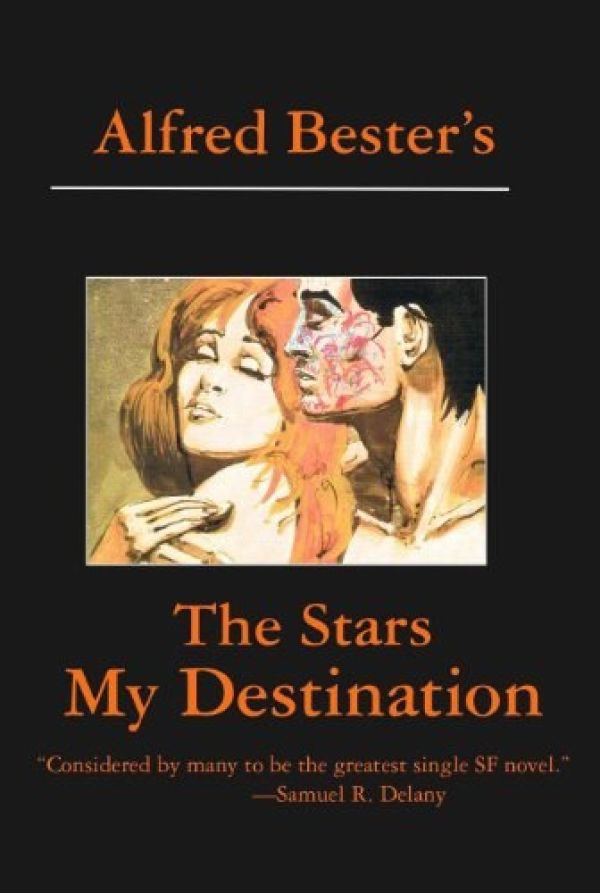
#5 in the Millennium SF Masterworks series, a library of the finest science fiction ever written.
“Science fiction has only produced a few works of actual genius, and this is one of them.”
—Joe Haldeman
“Bester at the peak of his powers is, quite simply, unbeatable” —James Lovegrove
Marooned in outer space after an attack on his ship, Nomad, Gulliver Foyle lives to obsessively pursue the crew of a rescue vessel that had intended to leave him to die. When it comes to pop culture, Alfred Bester (1913−1987) is something of an unsung hero. He wrote radio scripts, screenplays, and comic books (in which capacity he created the original Green Lantern Oath). But Bester is best known for his science-fiction novels, and The Stars My Destination may be his finest creation. With its sly pot-shotting at corporate skullduggery, The Stars My Destination seems utterly contemporary, and has maintained its status as an underground classic for fifty years. (Bester fans should also note that iBooks has reprinted The Demolished Man, which won the very first Hugo Award in 1953.)
Alfred Bester was among the first important authors of contemporary science fiction. His passionate novels of worldly adventure, high intellect, and tremendous verve, The Stars My Destination and the Hugo Award winning The Demolished Man, established Bester as a s.f. grandmaster, a reputation that was ratified by the Science Fiction Writers of America shortly before his death. Bester also was an acclaimed journalist for Holiday magazine, a reviewer for the Magazine of Fantasy and Science Fiction and even a writer for Superman.
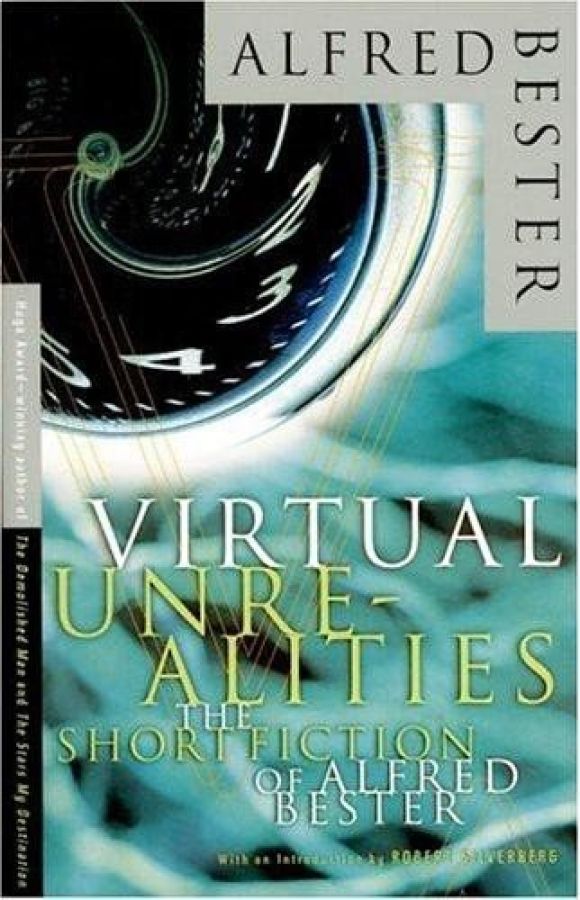
“Dazzlement and enchantment are Bester’s methods. His stories never stand still a moment.”
—Damon Knight, author of Why Do Birds
Alfred Bester took science fiction into hyperdrive, endowing it with a wit, speed, and narrative inventiveness that have inspired two generations of writers. And nowhere is Bester funnier, speedier, or more audacious than in these seventeen short stories — two of them previously unpublished — that have now been brought together in a single volume for the first time.
Read about the sweet-natured young man whose phenomenal good luck turns out to be disastrous for the rest of humanity. Find out why tourists are flocking to a hellish little town in a post-nuclear Kansas. Meet a warlock who practices on Park Avenue and whose potions comply with the Pure Food and Drug Act. Make a deal with the Devil — but not without calling your agent. Dazzling, effervescent, sexy, and sardonic, Virtual Unrealities is a historic collection from one of science fiction’s true pathbreakers.
“Alfred Bester was one of the handful of writers who invented modern science fiction. “
—Harry Harrison
Alfred Bester (1913−1987) was the author of two of science fiction’s seminal works, The Demolished Man and The Stars My Destination. He also wrote some fast-moving, sizzling short stories that were very highly regarded; many of them are included in the 17 stories showcased in Virtual Realities; two were never before published. Highlights include “Disappearing Act,” in which shell-shocked soldiers vanish from their hospital ward; “Hobson’s Choice,” in which a statistician uncovers a disturbing population trend in post-nuclear Kansas; “Time Is the Traitor,” wherein powerful business people manipulate their most valuable consultant; and “The Devil Without Glasses,” a conspiracy tale with an X‑Files feel. The science fiction and literary classic “Fondly Fahrenheit” stars wealthy Vandaleur and his mad android who has an unfortunate habit of turning murderous when the temperature gets too hot… All reet!
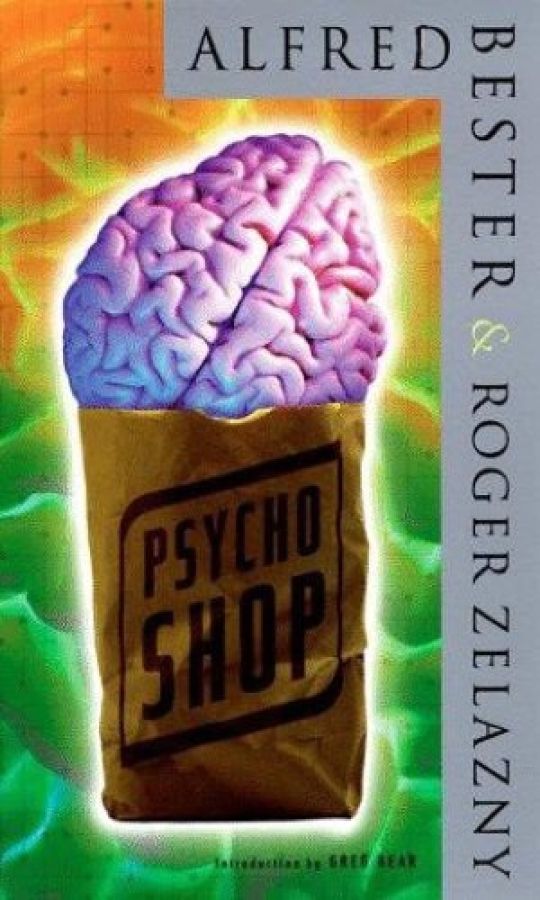
“A dark acid curio, brisk, fast, memorable, a rare improvisational duet from two of our best.” — Greg Bear
“Alfred Bester was one of the handful of writers who invented modern science fiction.” — Harry Harrison, author of Adventures of the Stanless Steel Rat
“Let there be light, and let there always be Roger Zelazny.” — Philip Jose Farmer, author of To Your Scattered Bodies Go
From Publishers Weekly:
This odd novel, left incomplete when Bester died in 1987, was finished by Zelazny, who himself died in 1995. In his introduction, Bear refers to Bester (The Deceivers) and Zelazny (Donnerjack) as masters of SF jazz, geniuses of improvisation, and the book has that feel to it. The plot is full of bizarre twists and turns. Neat ideas surface and disappear in an eyeblink and characters transform radically from one page to the next. Alf Noir, an investigative reporter, is sent to Rome to look into the mysterious Black Place of the Soul-Changer and its enigmatic proprietor, Adam Maser. Alf discovers that Maser is a Psychbroker, a sort of pawnbroker of the spirit, dealing in emotions, talents and psychological traits. Want more courage, the ability to see into the infrared, an understanding of ancient Persian? Maser will trade it to you for your mind-reading ability, or a rare coin, or perhaps for the secret of the collective unconscious. Alf discovers that Maser isn’t human, but a highly evolved cat from the far future. Nothing is what it seems and no one can be trusted, not even Maser’s sexy assistant, an evolved snake with whom Alf has an affair. There’s much fun to be had here, but the book doesn’t represent either writer in top form. Bester’s style in the first part of the novel seems dated, and things don’t gel until Zelazny takes over halfway through the book. Vintage has brought Bester’s finest work back into print, and for this it deserves praise, but this novel is most likely to appeal to Zelazny’s much larger readership.
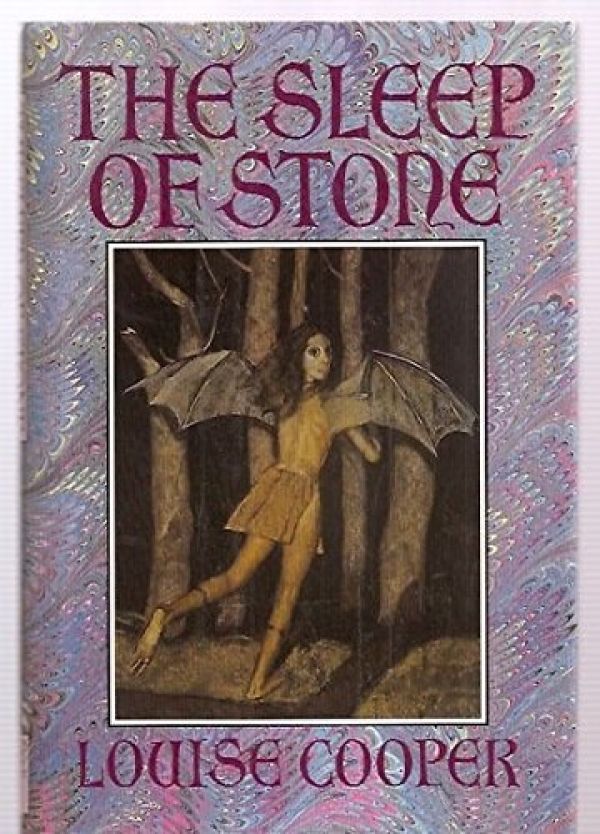
Ghysla is the last of her race of winged shape-shifters who were common before human beings proliferated. She is content with her solitary existence until the day she sees and falls in love with Anyr, a prince. Understanding that her clawed, sharp-toothed appearance could shock or frighten him, Ghysla uses her abilities to become various animals, most successfully, a seal that Anyr looks forward to greeting, and accompanies him through field, forest, and coast. Ghysla is happy with this strange relationship until the day that she learns Anyr is to marry. Blinded by unrequited love, she casts the “sleep of stone” on his betrothed, Sivorne, and takes her place at the wedding, unaware of the tragedy she has set in motion.
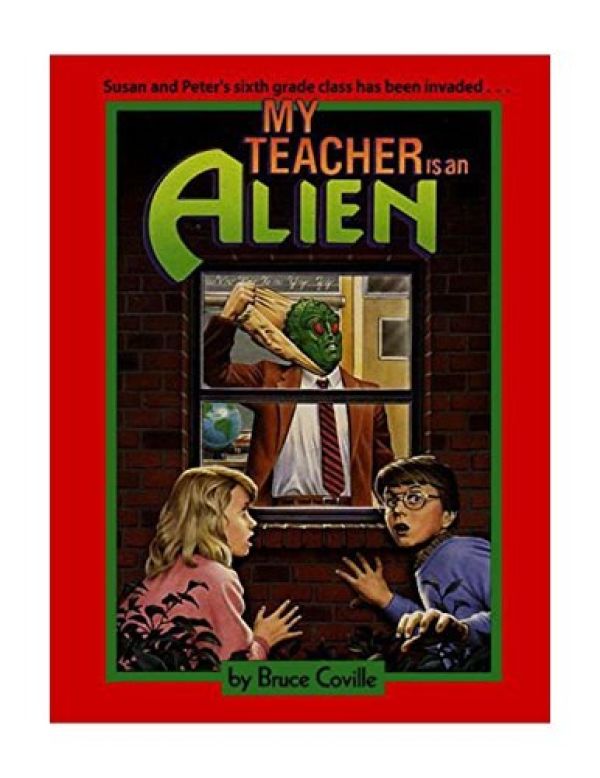
Twelve-year-old Susan Simmon’s finds that her substitute 6th grade teacher is more than just weird, he’s downright alien. In fact he’s an extraterrestrial who’s on a mission to choose a handful of students from Earth to take away with him into space for further testing, and other fates unknown!
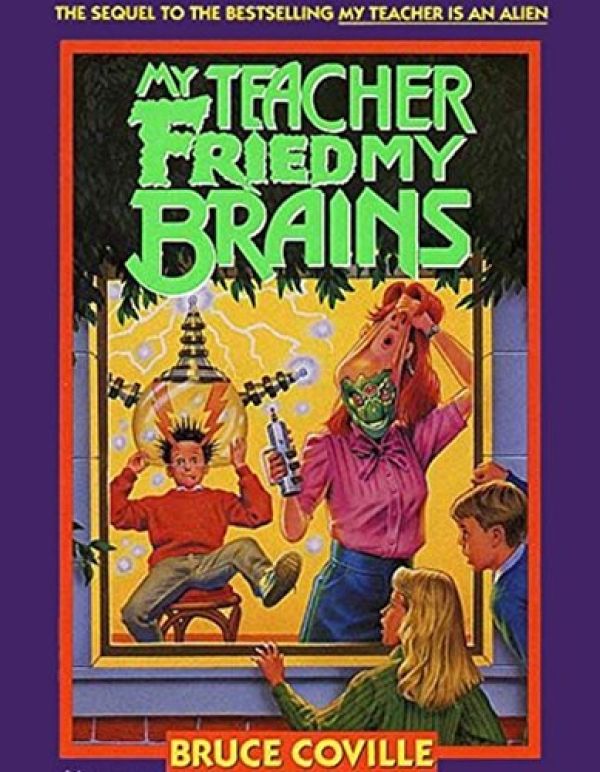
The whole situation began when Duncan Dougal was hiding out in a dumpster (it’s a long and smelly story). Stuck in the garbage, he discovered proof that even though the kids drove off the alien named Broxholm the year before, there is still an alien-in-disguise working as one of their 7th grade teachers! But which teacher is it? That’s the mystery Duncan must solve to protect the school – and himself.
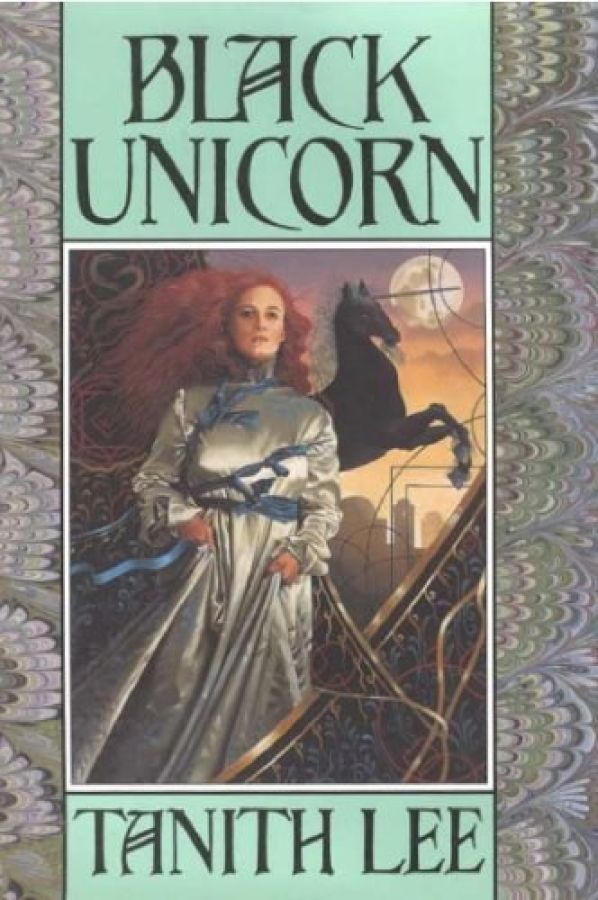
Nobody knew where it had come from, or what it wanted. Not even Jaive, the sorceress, could fathom the mystery of the fabled beast. But Tanaquil, Jaive’s completely unmagical daughter, understood it at once. She knew why the unicorn was there: It had come for her. It needed her. Tanaquil was amazed because she was the girl with no talent for magic. She could only fiddle with broken bits of machinery and make them work again. What could she do for a unicorn?
Grades 7 – 12, Tanaquil may be the daughter of a sorceress, but she can’t do any magic – or so she thinks – and she finds life in her mother’s castle very dull and lonely. Her one skill, that of mending things, leads her to piece together a pile of old bones found in the desert and unknowingly bring back to life a black unicorn that needs Tanaquil to help it return to its own, more perfect world. In the process of doing this, Tanaquil finds a sister, and discovers what her own powers really are. The plot of The Black Unicorn is in no way as simple as this description. It is complex and twisting, and while readers may not be sure where they’re going, they’ll never be bored. Lee’s lush and highly visual style and her down-to-earth sense of humor are a constant entertainment. Her imagination is boundless, whether in recreating the life of desert nomads or describing a castle full of magical devices all gone slightly awry. The static cover illustration, with rearing unicorn and silver-gowned heroine, does not begin to convey the special flavor of this stylish, humorous fantasy.
– Ruth S. Vose, San Francisco Public Library (School and Library Journal)
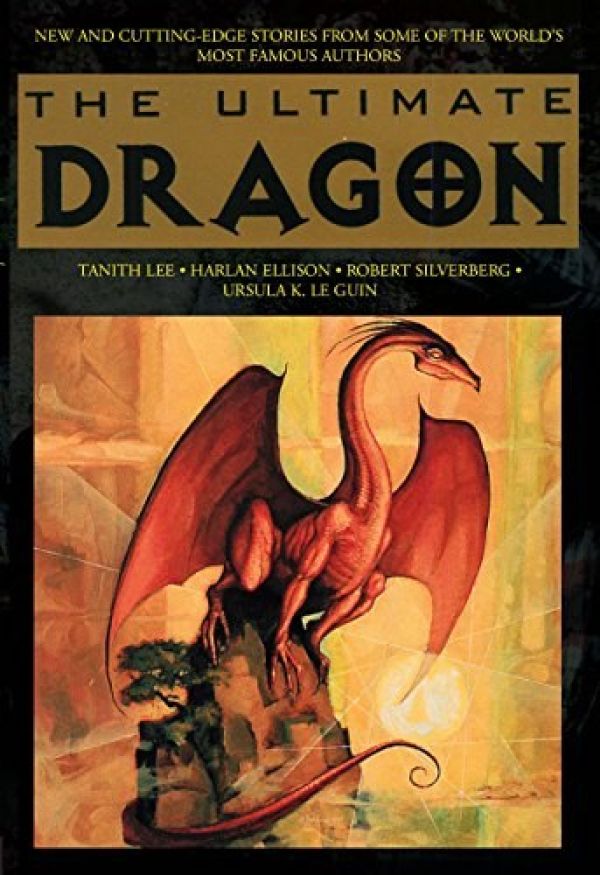
In this mythic and wondrous collection, some of the best-known authors of the fantastic explore the legends and lore of the fire-breathing creatures that have captured the imagination of adventure lovers everywhere — dragons.
From S.P. Somtow’s dramatic tale of an ancient dragon owned by a family in modern Thailand to Ursula K. Le Guins’s classic story of the power of a dragon’s naming, from Tanith Lee’s portrait of a dying dragon to Harlan Ellison and Robert Silverberg’s look at a dragon whose love for a human woman could spell doom for the whole Earth — here are spectacular dragon stories transcending time and place…
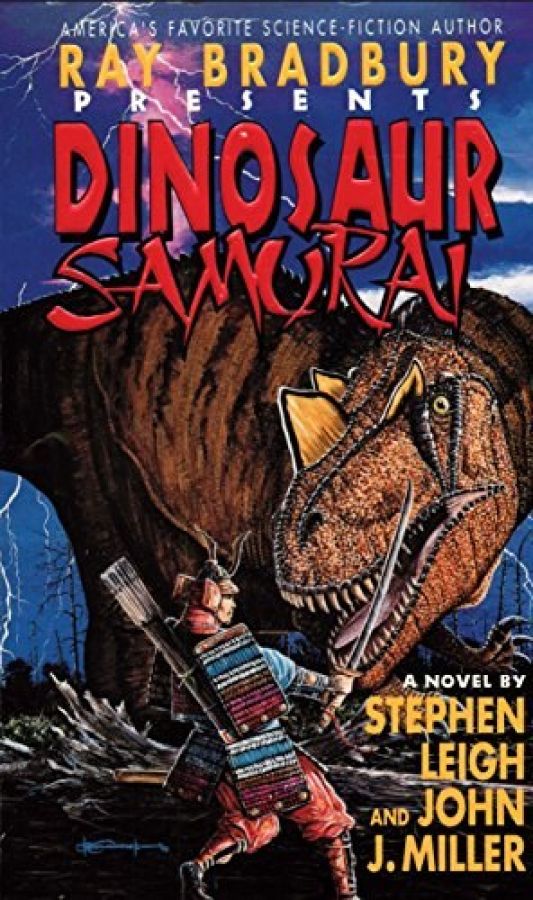
THE THIRD IN A SPECTACULAR NEW SERIES OF TIME TRAVEL ADVENTURES EVOLVING FROM THE WORK OF RAY BRADBURY, AUTHOR OF THE MARTIAN CHRONICLES.
SAFARIS TO ANY YEAR IN THE PAST.
YOU NAME THE ANIMAL. WE TAKE YOU THERE. YOU SHOOT IT.
The sign said it all, but the hunters soon became the hunted. Their safari took them to the age of dinosaurs, but the hunt went terribly wrong, sending ripples of change throughout the timestream.
Eckels, a psychotic time-traveler, has shot a dinosaur and meddled with history, destroying the future and trapping himself in the past. Transported to an alternate prehistoric period by a savage timestorm, Aaron Cofield manages to link up with a lost Time Safari guide, Travis. Together, they must hunt down Eckels and restore the shape of history.
Attacked by sentient dinosaurs, Aaron and Travis escape to an alternate medieval Japan. Caught between dinosaurs, ferocious samurai warriors, and the cold-blooded Eckels, the two must fight for their own survival- and to restore the timestream of our future!
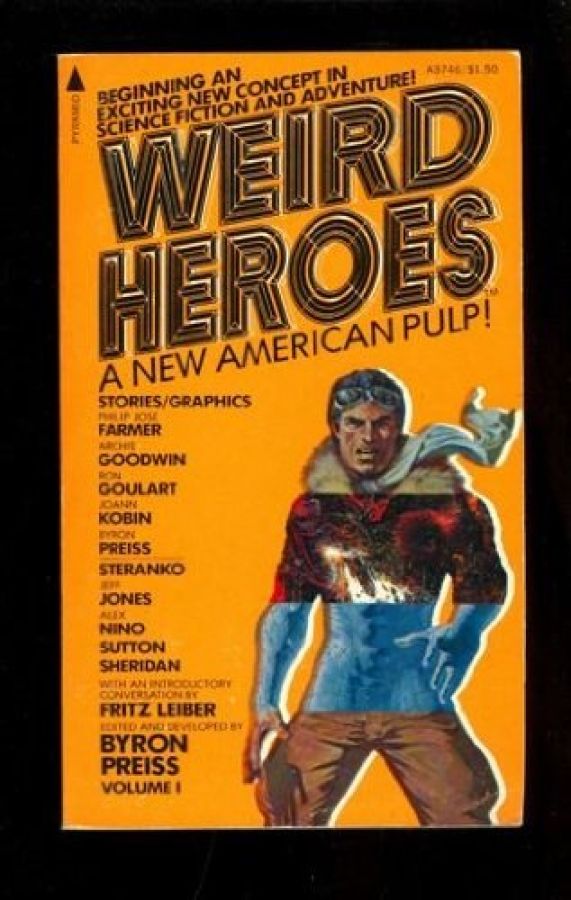
Weird Heroes is a collective effort to do something new: to approach three popular heroic fantasy forms — science fiction, the pulps and the comics — from different and exciting directions.
Each story in this book is experimental. There are revitalizations of classic fantasy themes such as time travel and jungle adventure. There is innovative use of some of the most dynamic graphic story talent in the world, from Philippino illustrator Alex Nino to American cartoonist Ralph Reese. There is a strong and conscious effort to encourage storytelling which does not rely on violence as a primary source of drama. Weird Heroes is a collective effort to give back to heroic fiction its thrilling sense of adventure and entertainment — the heartbeat of the old pulps. The pulps used heroes to bring fiction to a grand level of excitement — a level which incorporated the reader into the experience. Weird Heroes refreshes that concept of fiction as an adventure in itself, without relating to the new wave of violence and pornography in the production of exciting stories.
Weird Heroes is a collection of memorable firsts. It represents the first major publication of prose stories by both science fiction and graphic story writers. Within volumes 1 and 2 you will find the first published appearances of famous pulp biographer Philip Jose Farmer’s epic pulp character, “Greatheart Silver.” You’ll be witness to the first major book publication of an interview with award-winning science fiction and fantasy writer, Fritz Leiber. You’ll experience the insanity of Superman author Elliot S. Maggin’s “Gonzo Storytelling” and discover the new hero by a literary descendant to Dashiell Hammett on Secret Agent X‑9, Archie Goodwin.
Weird Heroes contains the first American book illustration work by award-winning Spanish artist Esteban Maroto. Jim Steranko and Neal Adams, two titans of the modern graphic story field, appear for the first time under the same cover in Volume 2. Tom Sutton, an unsung hero of the comics with a comedic style that blends Kurtzman, Elder, and Eisner, also makes his book debut with five plates for “Showdown at Shootout.”
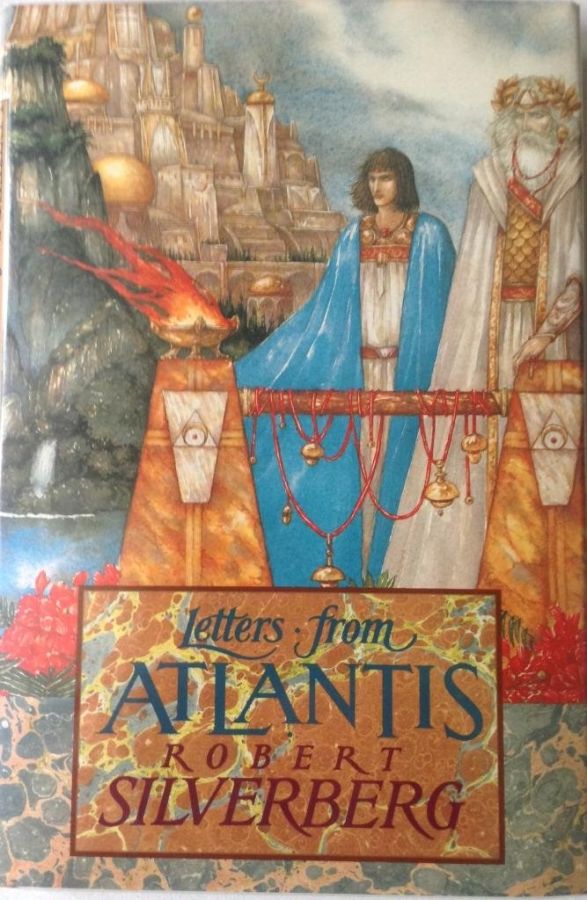
LETTERS FROM ATLANTIS
FROM ROBERT SILVERBERG
THREE-TIME WINNER OF THE HUGO AWARD AND FIVE-TIME WINNER OF THE NEBULA AWARD
It was a legendary island, a fantastic island. Atlantis, or as its prince called it, Athilan.
Roy had traveled through time with his partner, Lora, to find it — and now he was tantalizingly close to its shore.
Time travel allowed Roy’s consciousness to enter the mind of the heir to Atlantis’s throne, and what he found disturbed him. Strange dreams. How could such an advanced city exist at this time? The rest of the world was, as Lora witnessed in her travels, a dark, barbaric land still thawing from the ice age.
Roy had been prepared for the odd isolation of time travel, but nothing had prepared him for his final arrival on Atlantis — a shimmering city far beyond his imagination! Roy knew this island’s fate. According to legend, it would vanish into the sea. Roy also knew he had a limited amount of time to decipher the strange message in the Prince’s mind — visions of cataclysmic events, mysterious rites to a faraway star.
If Roy was in an Atlantis unlike anything the researchers had predicted, then what were its secrets? And when would it be destroyed?
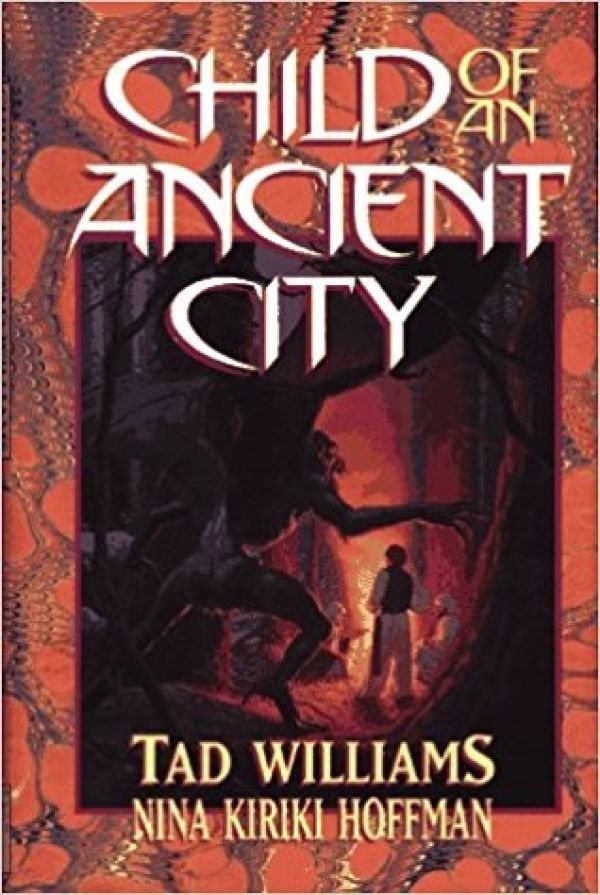
CHILD OF ANCIENT CITY
Tad Williams, best-selling author of Tailchaser’s Song and The Dragonbone Chair, returns to epic fantasy with an Arabian Nights vampire story, written in collaboration with acclaimed new fantasist Kiriki Hoffman.
CHILD OF
AN ANCIENT CITY
The caravan met disaster in the mountains. Bandits fell upon them by night, scattering their horses, looting and pillaging their cargo. When the survivors gathered together, they salvaged what they could and began the long trek home.
For Susri, the merchant’s son, the journey home be- comes a nightmare as people around him begin to dis- appear at night. Masrur and Ibn Fahad, the men in charge of the expedition, blame a vampyr, a creature that preys on the living and shuns the light of day. Susri, nicknamed Fawn, knows it must be true.
Fawn’s chance of stopping the vampyr is by story- telling. According to legend, a vampyr will stop and listen to a story told around a campfire if it is gripping enough, then retreat when dawn breaks.
Over the next few weeks, the caravan travels hard by day. At night stories are told.
On their last evening in the vampyr’s domain, the creature steps forward for the first time — and challenges them to a contest for the saddest story of all. If it wins, it will claim one of their number for its last meal. If they win, they may leave unharmed.
When the vampyr agrees to let them judge which story is saddest, Fawn suspects a trick. He has his own story ready — but will it be enough to defeat a vampyr?
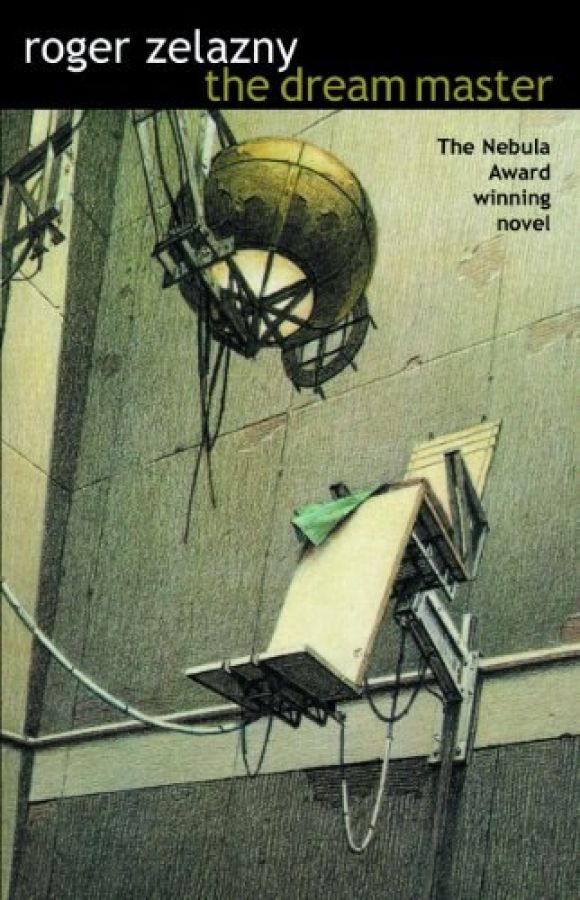
His name is Charles Render, and he is a psychoanalyst, and a mechanic of dreams. A Shaper. In a warm womb of metal, his patients dream their neuroses, while Render, intricately connected to their brains, dreams with them, makes delicate adjustments, and ultimately explains and heals. Her name is Eileen Shallot, a resident in psychiatry. She wants desperately to become a Shaper, though she has been blind from birth. Together, they will explore the depths of the human mind — and the terrors that lurk therein.
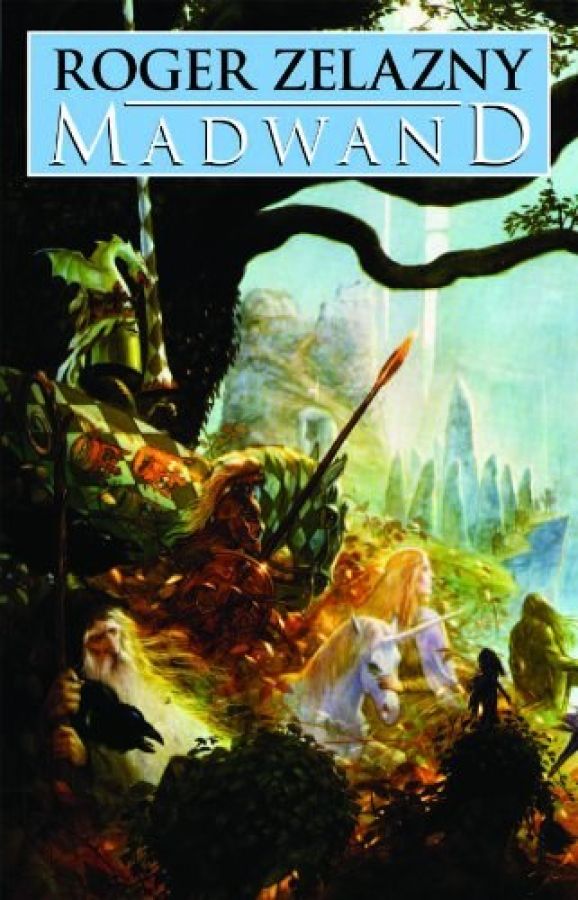
THE SEQUEL TO CHANGELING
“With Samuel R. Delany and Harlan Ellison, [Roger Zelazny was] a leading and representative figure of the American new wave sf that urged a shift of emphasis from the external world of the hard sciences to the internal worlds explorable through disciplines like psychology, sociology, linguistics, and the like.” —THE SCIENCE FICTION ENCYCLOPEDIA
The people had long suffered under Det Morson’s power … lived in terror of his dragons and other minions. When, at last, the wizard Mor joined the fight, Det and his infamous Rondoval castle were destroyed. But the victory was not complete, for the conquerors found a baby amidst the rubble: Det’s son, Pol. Unwilling to kill the child, Mor took him to a world where the ways of magic were considered mere legends — a world called Earth. But the laws of symmetry demanded that Mor take a baby from the other world to replace young Pol Detson, and that child would also remain ignorant of his rightful heritage. As the child — Mark Marakson, born Daniel Chain — matured, he displayed a gift for making mechanical gadgets that soon gave way to a variety of unnatural devices that frightened his neighbors … On Earth, Pol Detson grew to become Daniel Chain, a nightclub guitarist possessing mental energies he doesn’t understand. But those mental abilities will soon determine his fate in a terrifying clash of power … on a world which, as yet, he knows nothing about.
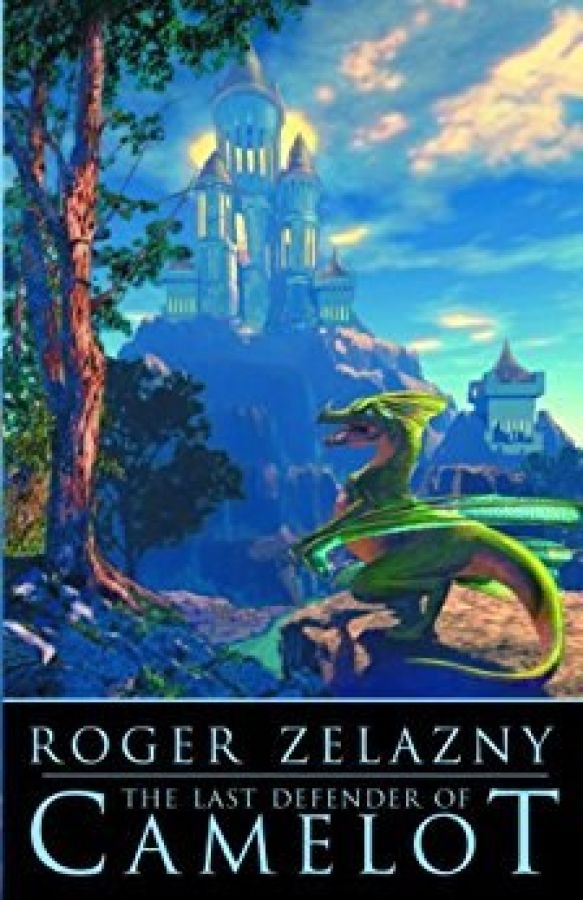
The Last Defender of Camelot is a collection of breathtaking stories that showcase the incredible abilities of several authors. Edited and with an introduction by award-winning author Robert Silverberg, it includes such tales as For a Breath I Tarry, and Halfjack. It also features the Hugo Award-winning 24 Views of Mt. Fuji, by Hokusai, Permafrost, and Home is the Hangman.
From Publishers Weekly
Though SF “master of prose technique” and “paragon of the storytelling art” (in the introductory words of Robert Silverberg, himself a certified luminary) Roger Zelazny died in 1995, collections of his work appear on shelves with pleasing regularity. The Last Defender of Camelot, the fifth in the series of new Zelazny editions, offers readers 11 of what Silverberg has deemed his best stories, including “24 Views of Mt. Fuji, by Hokusai,” which earned him one of his six Hugos, and 1992’s “Come Back to the Killing Ground, Alice, My Love,” which has not been previously collected.
About the Author
Roger Zelazny was a three-time Nebula Award and six-time Hugo Award-winning author of science fiction and fantasy classics, including the short stories “24 Views of Mount Fuji, by Hokusai,” “Permafrost,” and “Home is the Hangman.” Zelazny was the bestselling author of the ten-volume Chronicles of Amber series of fantasy novels, as well as the novels Lord of Light, and Psychoshop (written with Alfred Bester). Zelazny’s novel Damnation Alley served as the basis for the 1972 cult film of the same name, starring Jan Michael Vincent and George Peppard.